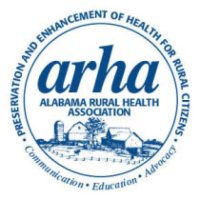
The Alabama Governor’s Office has submitted a comprehensive proposal to the federal government to secure Rural Transformation Fund resources that could reshape healthcare delivery across Alabama’s 58 rural counties. Known as the Alabama Rural Health Transformation Program (ARHTP), the initiative represents one of the most ambitious rural health reform plans in state history, designed to stabilize struggling facilities, expand access, strengthen the workforce, and bring care closer to home for more than 1.6 million rural residents.
A Statewide Strategy for Sustainable Change
At its core, the ARHTP aims to ignite transformational change across Alabama’s healthcare ecosystem. Guided by principles of transformation, sustainability, and accountability, the plan targets measurable improvements in access, quality, and health outcomes. It focuses on five pillars:
- Improving Access – through statewide telehealth and remote monitoring networks, mobile specialty services, and expanded behavioral and maternal health care.
- Improving Outcomes – by leveraging data and technology for chronic disease management, cancer prevention, and integrated behavioral health care.
- Technology and Innovation – establishing regional IT and cybersecurity hubs to connect providers through shared Electronic Health Records and secure data systems.
- Partnerships and Workforce Development – expanding Graduate Medical Education and creating pipelines through the new Alabama School of Healthcare Sciences, community colleges, and hospitals.
- Financial Solvency and Sustainability – modernizing payment models, supporting Treat-in-Place EMS reimbursement, and incentivizing local and regional cooperation among providers.
Key Initiatives to Transform Rural Care
The plan includes ten major initiatives that will directly impact rural providers and communities:
- Collaborative EHR, IT, and Cybersecurity Initiative will create regional “hub” hospitals to help smaller facilities modernize technology, improve interoperability, and reduce cybersecurity risks.
- Rural Health Initiative will expand telehealth and shared service networks to reduce unnecessary transfers and improve coordination.
- Maternal and Fetal Health Initiative will provide telerobotic ultrasound systems, digital regionalization for obstetric care, and emergency labor and delivery carts for rural hospitals.
- Rural Workforce Initiative will fund healthcare training, Graduate Medical Education expansion, and incentives to attract professionals to rural practice.
- Cancer Digital Regionalization Initiative will build on Alabama’s Operation Wipe Out model for mobile screening and early detection.
- Simulation Training Initiative will expand specialty training programs like COACHES for pediatric and emergency care in community hospitals.
- EMS Trauma, Stroke, and Treat-in-Place Initiatives will enhance statewide emergency coordination and allow paramedics to treat patients on-site using teleconsultation.
- Mental Health Initiative will expand school-based tele-mental health and convert Community Mental Health Centers to Certified Community Behavioral Health Clinics.
- Community Medicine Initiative will integrate mobile wellness screening, healthy food access, and public education on healthy living.
How ARHA Members Can Play a Role
Members of the Alabama Rural Health Association (ARHA) are vital to the success of this plan. Hospitals, clinics, behavioral health centers, and academic partners across the state will have opportunities to participate in and benefit from these initiatives. Here are several ways ARHA members can engage:
- Participate in Pilot Projects: Members should watch for funding announcements and Requests for Proposals from ADECA or ADPH to serve as regional “hub” hospitals, telehealth partners, or workforce training sites.
- Support Policy Development: The Governor’s plan calls for an ARHTP Advisory Group, established by executive order in 2026, to recommend telehealth parity, EMS reimbursement, and licensure reforms. ARHA will help to ensure that rural providers have a voice in shaping these policies.
- Leverage Shared Resources: Members can explore shared IT services, cybersecurity operations, and group purchasing agreements through the proposed regional networks.
- Strengthen Local Coalitions: Collaboration among hospitals, clinics, schools, and public health agencies will be crucial to implementing programs such as school-based tele-mental health and maternal care hubs.
- Promote Workforce Pipelines: Rural facilities can partner with our universities, local colleges and workforce development programs to host training, internships, and residency programs that will sustain the healthcare workforce into the next decade.
The Road Ahead
The ARHTP will represent hundreds of millions of dollars of direct investment into rural healthcare over five years, potentially transforming how care is delivered across Alabama’s small towns and communities. The Alabama Rural Health Association stands ready to partner with the Governor’s Office, ADECA, and state agencies to ensure that rural voices are represented, that projects reflect real community needs, and that this unprecedented opportunity results in lasting, measurable improvements for Alabama’s rural citizens.






